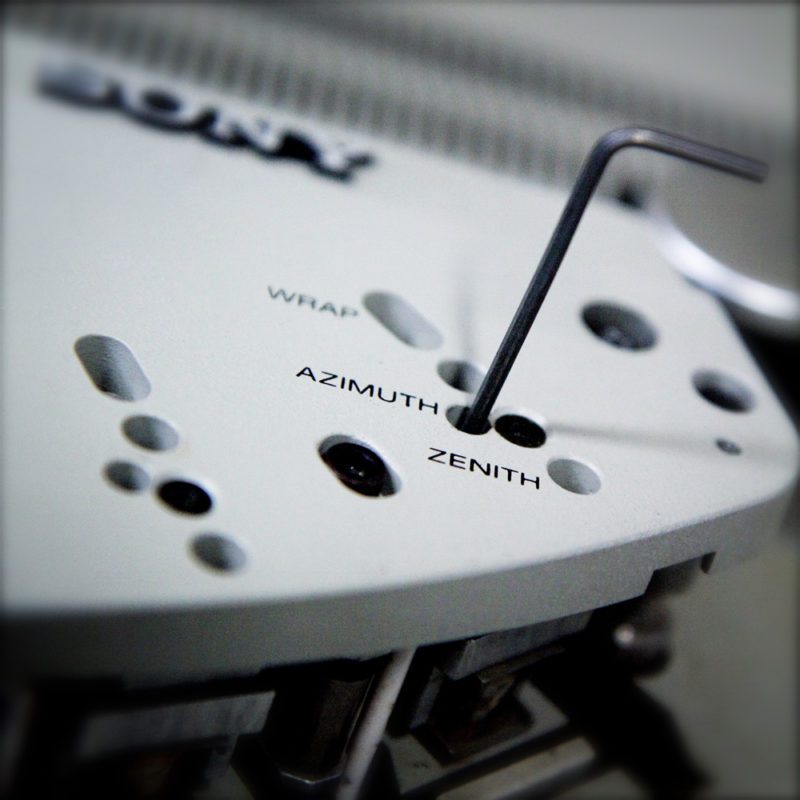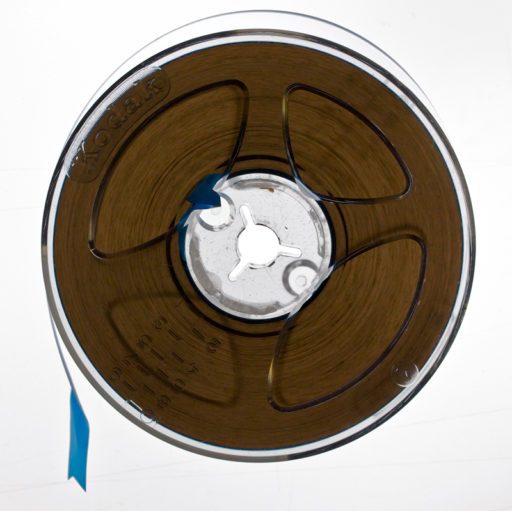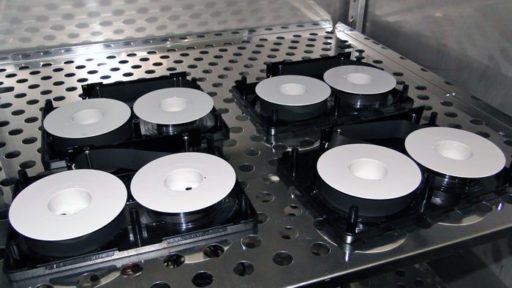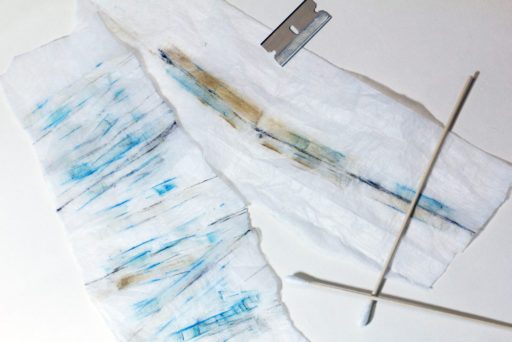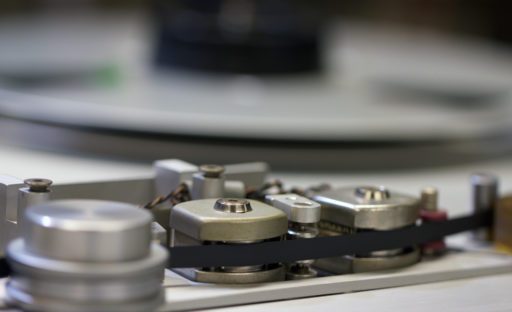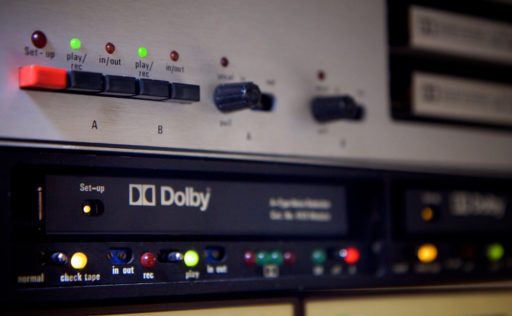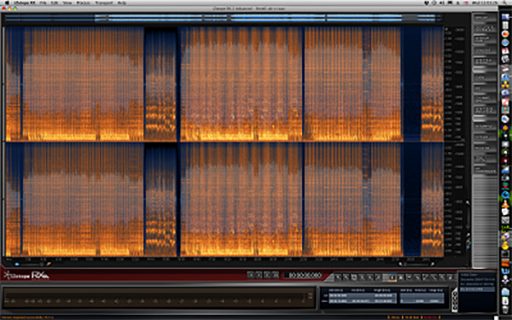introduction to our audio services
At Greatbear, we have many years' experience in the conservation and digitising of all forms of analogue and digital magnetic audio tape - on reel-to-reel, cassette and cartridge. We work with archives, museums, universities and individuals: we value all recordings on tape, whatever they are, whoever owns them and in whatever quantity.
We have carefully collected, restored and maintained a wide range of audio equipment, including the best and most appropriate machines for transferring older / more fragile magnetic audio tape. All our transfers are made to high resolution audio files (unless otherwise desired), using very high quality Benchmark Media Systems and Lavry external analogue to digital (AD) converters.
If you have recordings that are important to you, it's worth getting the best from them by using a specialist service such as ours. The alternatives, such as USB tape machines or recordings made directly to CD recorders or sound cards, tend to produce low-quality or distorted sound. And worse than a disappointing transfer: unserviced playback machines can handle tape roughly, causing permanent damage and loss of content.
We offer a range of delivery formats for our audio transfers. We use the International Association of Sound & Audiovisual Archives Guidelines on the Production and Preservation of Digital Audio Objects, delivering 24-bit/96kHz Broadcast WAV files, together with mp3 audio file or audio CD listening versions. We're happy to create any other digital audio files, according to your needs.
Scroll down to read a step-by-step guide to "what happens to your audio tape" at the Greatbear studio.
Visit our media identification page to browse the formats we digitise.
We're friendly, flexible and love talking tape! If you have any questions please don't hesitate to contact us →
| Carrier | Carrier Detail | Width | Track(s) | Analogue / Digital |
|---|---|---|---|---|
| Reel-to-Reel | ¼ inch | ¼ inch / 6.35mm | Stereo / Mono | Analogue |
|
¼ inch multi-track (Tascam 4-track / Tascam 388 Studio 8 8-track / Fostex R8 8-track / Fostex E8 8-track) | ¼ inch / 6.35mm | Multi-track | Analogue | |
| ½ inch multi-track (Tascam & Fostex 8-track / Fostex 16-track) | ½ inch / 12.7mm | Multi-track | Analogue | |
| 1 inch multi-track (16-track / 24-track) | 1 inch / 25.4mm | Multi-track | Analogue | |
| 2 inch multi-track (16-track / 24-track) | 2 inch / 50.8mm | Multi-track | Analogue | |
| Cassette | Compact Cassette | approx ⅛ inch / 3.81mm | Stereo / Mono | Analogue |
| Dictation Cassette (Microcassette / Minicassette / Grundig Stenocassette) | approx ⅛ inch / 3.81mm | Stereo / Mono | Analogue | |
| DAT (Digital Audio Tape) | approx ⅛ inch / 3.81mm | Stereo / Mono | Digital | |
| Compact Cassette multi-track (4-track / 8-track) | approx ⅛ inch / 3.81mm | Multi-track | Analogue | |
| ADAT (Alesis Digital Audio Tape) | ½ inch / 12.7mm | Multi-track | Digital | |
| PCM Audio on Video Tape | ½ inch / 12.7mm | Stereo / Mono | Digital | |
| DTRS (Digital Tape Recording System) DA-88 / PCM800 | 5⁄16 inch / 8mm | Multi-track | Digital | |
| Slide-Tape | approx ⅛ inch / 3.81mm | Multi-track | Analogue | |
| Cartridge | 8-track | ¼ inch / 6.35mm | Stereo / Mono | Analogue |
| NAB | ¼ inch / 6.35mm | Stereo / Mono | Analogue | |
| Disc | Minidisc | approx 2 ½ inch / 64mm diameter | Stereo / Mono | Digital |
| CD | 4 ¾ inch / 120mm diameter | Stereo / Mono | Digital | |
| DVD | 4 ¾ inch / 120mm diameter | Stereo / Mono | Digital |
what happens to your audio tape?
After clients decide they want to send us their tape, they often ask: 'what happens next?'
To answer this question we thought we'd put together a step-by-step guide outlining the journey your tape undergoes once you decide to work with Greatbear.
Please note: this guide largely refers to our individual / domestic customer inquiries. For work conducted with archives, heritage institutions and media professionals there are most likely to be additional steps, such as developing a plan to capture metadata.
1) Send us your tape
We recommend you send your tape using a quick and tracked delivery service, particularly if the material is rare or valuable to you. We recommend using a fast service because it minimises the amount of time your tape is not in a temperature-controlled environment. You can use a covering letter to tell us about your tapes, or fill out the customer tape assessment sheet and enclose it with your package. You can also visit us in person. We like visitors and understand that people feel nervous about sending material in the post. Make sure you phone us first to ensure that someone will be in to meet you.
2) Reception, labelling and database entry
When we receive your tape each individual reel, cassette, cartridge or disc is given a unique identifying number, and entered on our database. All tapes are given a 'sitting period' of at least 24hrs. in order to acclimatise to conditions in the Greatbear studio. It is risky to play tape back immediately because it will undergo subtle changes in shape as it adjusts to its new environment. Playing it back prior to acclimatisation risks damaging the tape. If your tape is displaying signs of mould infestation it will placed in quarantine and treated immediately so that active mould can be driven into dormancy. After 24 hours the tape will have stabilised, making it safe to move on to the next stage of the digitisation process: assessment.
3) Assessment
We offer customers free assessment of their tape primarily because it can be difficult to know what treatments are necessary without examining the tape's physical condition. This is also why we are hesitant to advertise generic prices for our service because the condition of each tape will vary depending on its storage and playback history. Often we can figure out the condition of tape by visual assessment.
The tape may not have been stored in the most careful way, leading to the tape pack becoming loose and bumpy. Your tape may be displaying signs of vinegar syndrome, a common problem with acetate tape, which is identifiable if the tape pack appears translucent when held up to the light. We also have many years of experience working with particular tape brands which consistently degrade due to their chemical composition. Ampex tapes, for example, almost always develop problems with the binder, known as binder hydrolysis or 'sticky shed syndrome.' Playing back tapes suffering from this condition without treatment will severely damage them and our machines. Recordings are usually recoverable however, following the appropriate treatment.
On other occasions we may need to play back the tapes as part of our assessment because problems may not be so obvious, for example in cases where tape is squealing yet not suffering from typical binder hydrolysis. We use a specially-adapted Studer A80 which doesn't have any fixed guides to conduct the machine-based assessment. This enables us to control the tension and speed of the tape as it moves through the mechanism, lessening any potential damage to the tape.
We also use magnetic readers to visually assess the material recorded on our clients' tapes. By pressing the viewer against the tape we are able to read the magnetic information recorded on it. The reader can help us to visually identify the position and number of the recorded audio tracks on the tape, and enables accurate playback during digitisation. Magnetic readers can also help us to identify potential problems with the tape, for example if a track has been partially erased.
4) Treatment
Once any problems with the tape have been ascertained, we can proceed with the appropriate treatment. For tapes experiencing binder hydrolysis, the tape is dehydrated at controlled temperatures in our Thermo Scientific Heraeus B20 laboratory incubator for at least 48 hours - the amount of 'tape baking' depending on the brand, size and age of the tape. Dry-shedding tapes may require intensive cleaning before a safe and accurate transfer can be made. In such cases tape is carefully wound and rewound allowing each section of the tape to be cleaned using non-dusting and non-abrasive fabric.
Other examples of pre-transfer treatments include: carefully removing dried splices, cleaning excess glue and resplicing tape; re-shelling broken or faulty cassettes; re-spooling reels and cassettes in order to correct the tension in the spools and in some cases, re-lubricating tape so it can move smoothly through the transport.
5) Checking
After treatment has been completed, we do a final check to see if tapes are playing back without shedding or emitting squealing noises from the tape transport. If either is occurring, we go back to conduct further treatment.
6) Machine Cleaning
Prior to digitisation our playback machines have to be cleaned. Machines are cleaned regularly, according to the requirements of each format. Open-reel tape machines for example, are quick and easy to clean because the tape path is clearly visible. Machines are cleaned before each transfer, and sometimes more frequently, depending on the condition of the tape.
7) Calibration
In a digitisation context, calibration refers to the process through which playback machine specifications are adjusted in order for the tape to be played back in the clearest, most accurate form possible.
Migrating professional audio tape recordings can be relatively straightforward if you have access to information about speed the tape was recorded, audio tones and noise reduction. This precious metadata was meticulously written on tape boxes by sound engineers so that recordings could be played accurately in different studios. For those digitising magnetic tape this information is a gift because it helps us playback the tape according to its original specifications. Of course not all professional recordings include this information, and in such cases we adjust the specifications of the playback machine aurally, using our many years' experience. Almost all domestic tape recordings are prepared in this manner because it is incredibly rare that detailed information about the recording history is documented.
8) Digitisation
Once all the above processes are complete we are ready replay and digitise analogue audio recordings or capture the digital stream from digital audio recordings. We will typically capture the digital file at recommended archival standards: 24-bit / 96kHz for analogue audio or at the source material's native bit depth and sample rate for digital audio recordings. We can also digitise to 24-bit / 192 kHz, if required.
9) Audio restoration
Once we have the 'raw transfer' there is the option to apply various restoration technologies. We only do this if it is explicitly requested from the customer because, in line with professional archival practices, we believe such actions compromise the authenticity of the transfer. We do, however, understand this level of authenticity is not paramount for all our clients, and in such cases applying audio restoration technologies may be desirable. The audio restoration services we offer include noise reduction, speed correction and volume correction.
10) Encoding file format for use and access
Large, uncompressed archival files can take up a lot of data space, making it difficult to publish and share information online. We are able to encode additional files for ease of use and access. For audio the most common encoded files are MP3 and AAC. If you want your file encoded differently, just ask! We do however recommend you have both an uncompressed, high quality transfer (Broadcast WAV) for archival purposes and a lossy, compressed copy (MP3 or AAC) for access. You can specify which file formats you want on our downloadable customer assessment form.
11) Creating delivery media
Once the files are finalised we then create the delivery media. We strongly recommend file delivery on an external hard drive rather than CD. We are happy to provide a hard drive or other USB media of an appropriate size and specification, the cost of which will be added to your invoice, or you can send a hard drive along with your tapes. We can advise on the size of USB media needed. We also deliver files online.
12) Packing finished transfers to send to customers
If you would like to have your tapes returned to you post-digitisation, we will carefully pack them in recycled bubble wrap and jiffy bags / boxes, and send using a tracked delivery service, at cost to the customer. Customers are also very welcome to pick up their tapes and transferred digital files in person, but as always, do phone in advance to arrange your visit.
Alternatively we can arrange to safely dispose of any tapes you do not want returned. We will dispose of all uncollected tapes after 8 weeks, so please remember to communicate your wishes regarding your tapes post-digitisation.
We hope this gives some insight into what happens to your tape when you send it to us. If you do have any more questions please don't hesitate to get in touch.


